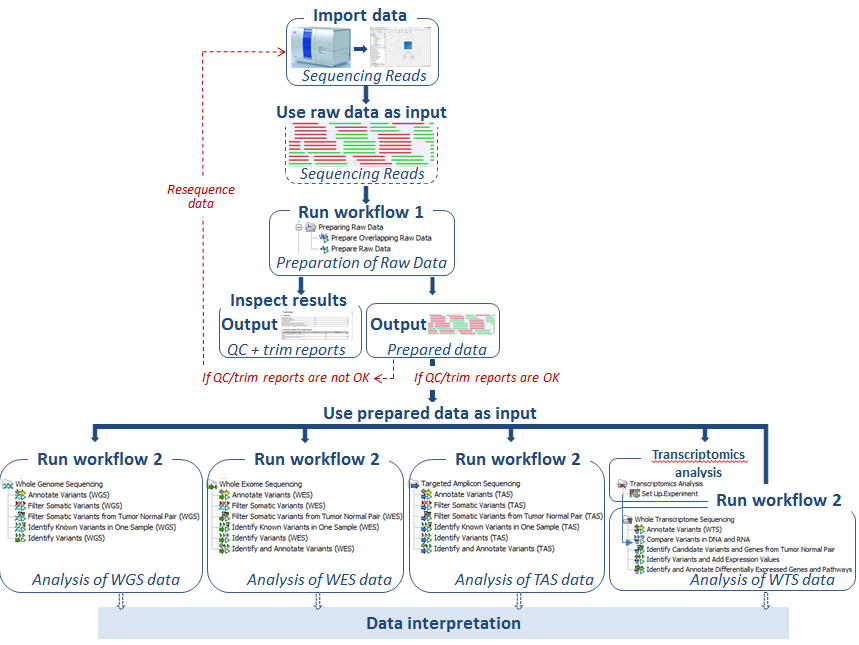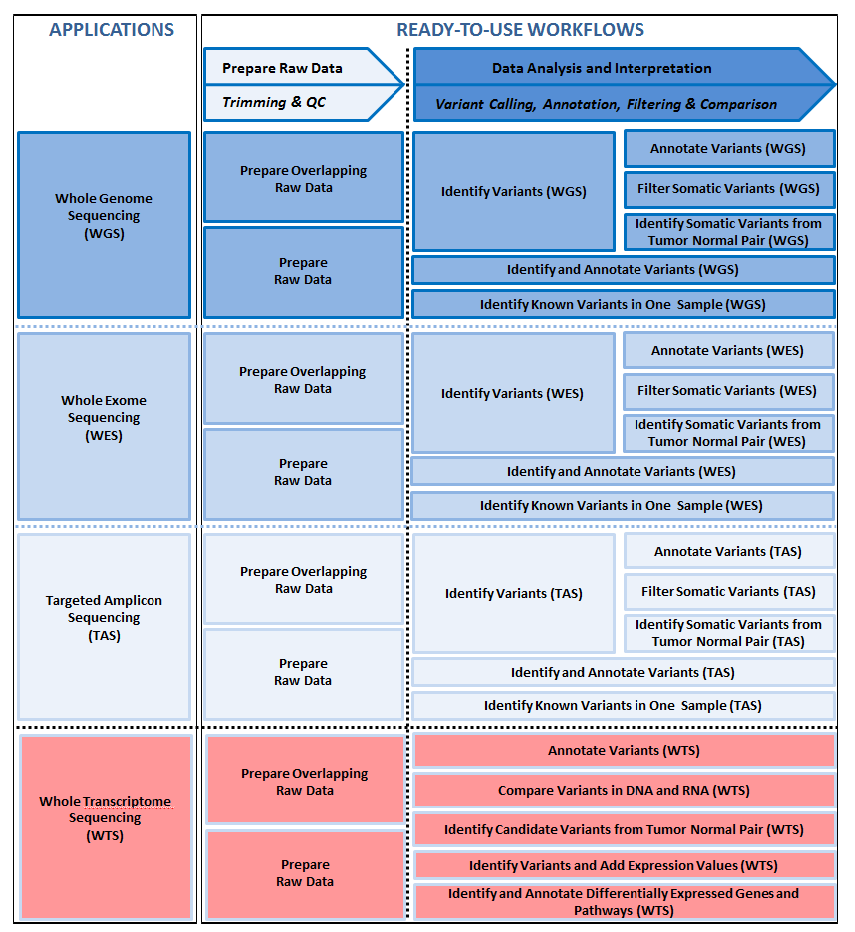Workflows - an overview
Biomedical Genomics Workbench offers a number of analysis workflows, also referred to here as the pre-installed ready-to-use workflows, which include all the necessary steps for a particular analysis, from the initial quality checking and trimming of the reads to the final reporting of the results, for example, the disease causing mutations detected in an analysis. The workflows are easy to use and just require the sequence data as input. You may need to provide additional information relevant to your data and analysis to run a given workflow, for example adapter trim lists for trimming sequences, or, when performing "Targeted Amplicon Sequencing", a description of the sequenced regions.
Irrespective of the type of sequencing data you wish to analyze, there are only few steps necessary before the identified variants are available for your inspection. A schematic representation of the flow that an analysis could take is shown in figure 2.6.

Figure 2.6: A basic example of the flow of steps for a sequencing data analysis. The data is first imported into the Workbench. Then it should be prepared for analysis. Here, a ready-to-use workflow labeled workflow 1 is used for this. It runs quality control and trimming steps. After inspection of the quality and trimming reports, the trimmed data are used as input for another ready-to-use workflow, called workflow 2 in this figure. This is where the data analysis is carried out. Here, workflow choices associated with variant detection are shown. Additional analyses can be performed downsteam of this if desired. Downstream analysis could involve using another ready-to-use workflow or could involve running individual tools from the Tools section of the Toolbox.
The ready-to-use workflows to run, and how many of them to run depend on the type of data you have and the analysis you wish to perform. For example, overlapping paired data involves other considerations than single or non-overlapping paired data. Different workflows will be relevant if your aim is to detect variants or annotate variants with information from other databases. Typically you will need to run two or three workflows to complete a full analysis that includes preparation of the raw data.
Figure 2.7 shows some of the ready-to-use workflows that are available for each application. Irrespective of the application type, the first step involves preparation of the raw data. The ready-to-use workflow to choose to launch the data preparation depends on the type of data being analyzed. For example, the "Prepare Overlapping Raw Data" workflow is designed to handle reads with overlapping pairs, whereas the "Prepare Raw Data" workflow is for read sets without overlapping pairs. The initial data preparation step involves quality control and trimming of the reads.

Figure 2.7: The available pre-installed ready-to-use workflows for the individual application types.
